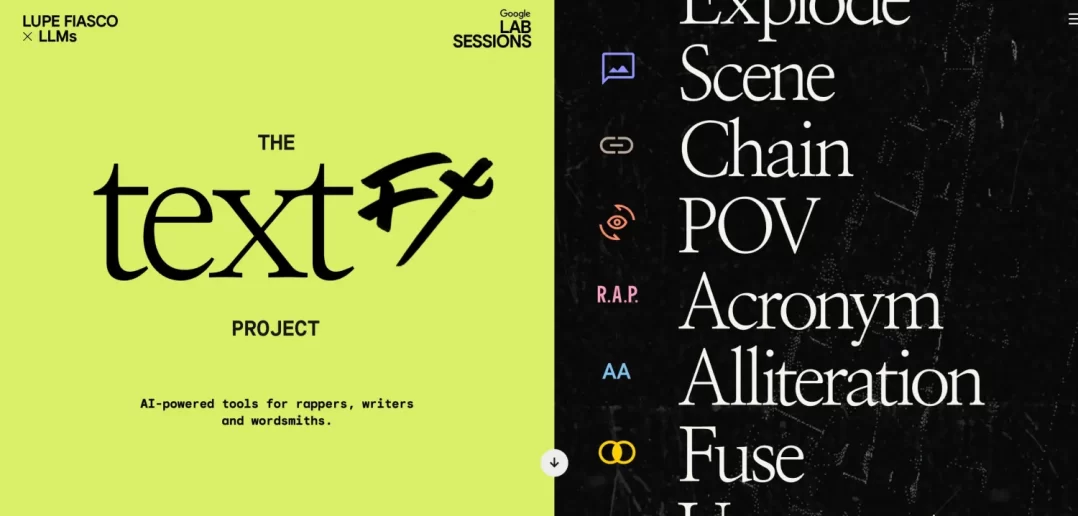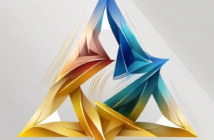Unleashing Creativity with TextFX: A Deep Dive into Google’s Language Experiment
In the constantly evolving world of artificial intelligence, the ability to harness machine capabilities for human creativity remains a tantalizing possibility. Google’s latest endeavor, TextFX, offers a fresh lens into this potential, providing artists and creators with a set of ingenious tools to amplify their creative processes.
TextFX: Bridging AI and Human Creativity
Google’s foray into fusing AI and creativity comes as part of their Lab Sessions, which are essentially synergistic collaborations between AI technologies and individuals from diverse creative disciplines. In this instance, GRAMMY® Award-winning rapper and MIT Visiting Scholar, Lupe Fiasco, takes center stage. Together with Google, Fiasco introduces TextFX—a suite of ten AI-driven tools designed to aid writers, rappers, and other wordsmiths in their craft[^1^].
The core functionality of TextFX lies in its ability to interpret user prompts and produce creative textual results. It’s an initiative backed by the prowess of Google’s PaLM 2 large language model via the PALM API[^1^]. What this translates to for the user is the power to experiment with tools such as “Simile” to create comparative phrases, “Explode” to break down a word into similar-sounding alternatives, or even “Unfold” to embed a word into other phrases[^1^].
The inception of TextFX is interesting in itself. Google initially believed that Fiasco would want an AI to compose lyrics for him. However, what the rapper sought was something more profound—an instrument to navigate the myriad possibilities stemming from a single word or concept[^1^].
Beyond Just a Tool: TextFX’s Interface and Usability
The practical application of TextFX goes beyond its conceptual appeal. The interface, designed by Khyati Trehan, exudes sophistication and elegance, ensuring an intuitive user experience[^2^]. Features such as a temperature slider allow users to modulate the “creativity” level of the AI’s responses, adding an extra layer of flexibility to the tool[^2^].
Moreover, each feature is accompanied by a short explanatory video by Lupe Fiasco, enhancing the tool’s charm and usability[^2^]. Users can not only engage with the tool on textfx.withgoogle.com but also have the chance to delve deeper into its making by accessing the open-sourced code[^3^].
Redefining the AI-Creativity Paradigm
The collaboration between Google and Lupe Fiasco underlines a larger narrative—one where AI is not a replacement but a collaborator. OpenAi founder Sam Altman emphasized this sentiment, noting the unexpected influence of AI on creative industries[^2^]. With projects like TextFX, the fear of AI usurping the roles of creators is alleviated. Instead, it presents a vision where AI can be the very tool that propels creators beyond their creative barriers[^2^].
The TextFX experiment showcases the transformative power of AI when channeled constructively. By spotlighting how AI can augment creativity, Google is initiating a narrative shift in public perception, setting the stage for even more groundbreaking collaborations in the future.
Aaron Wade, a Creative Technologist at Google, encapsulates the essence of TextFX perfectly: It’s an embodiment of the potential of AI to augment human creativity. Today, TextFX serves writers. But tomorrow, with the ever-expanding horizons of AI, who knows what other creative domains might benefit from such collaborations[^3^]?
This synergy between man and machine isn’t just the future—it’s happening now. And as AI tools like TextFX become more integrated into our creative processes, the possibilities are bound to be limitless.
[^1^]: [Source: Blog by Abner Li]
[^2^]: [Source: Review on TextFx from Google, August 21, 2023]
[^3^]: [Source: Blog post by Aaron Wade, Creative Technologist at Google]




